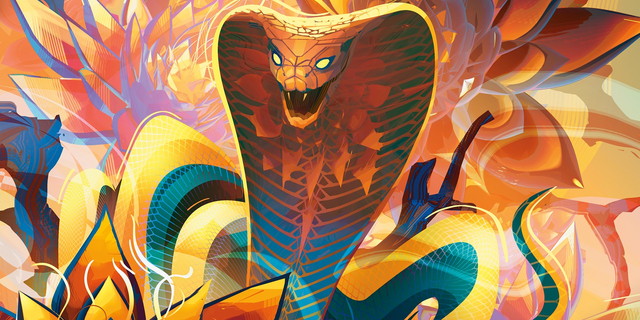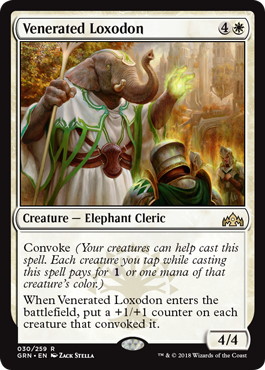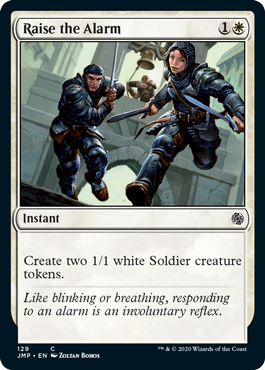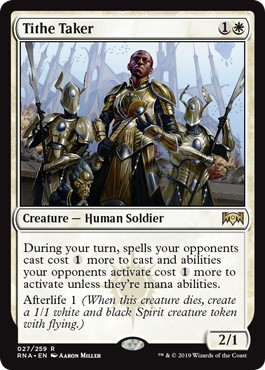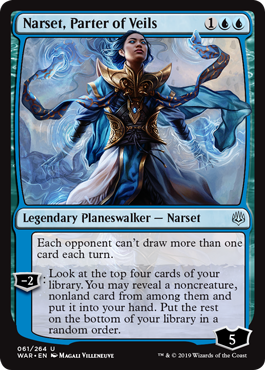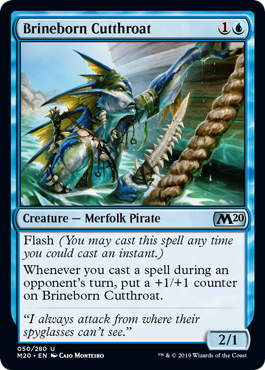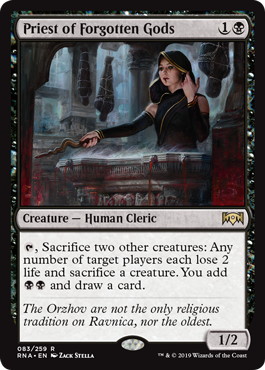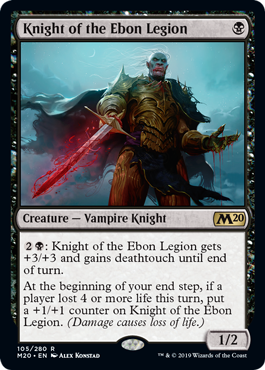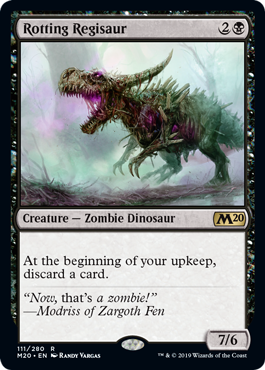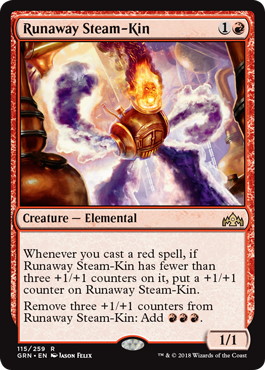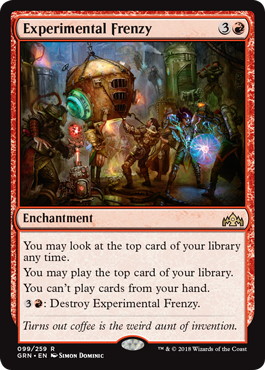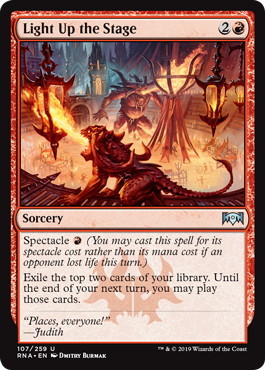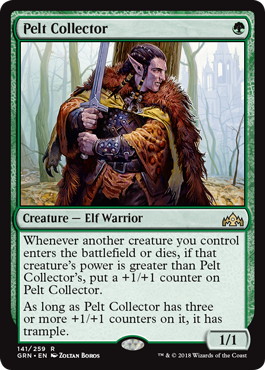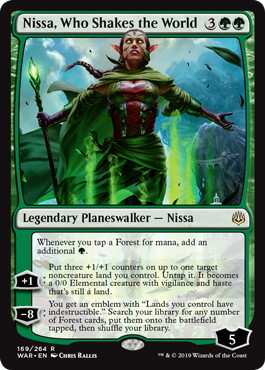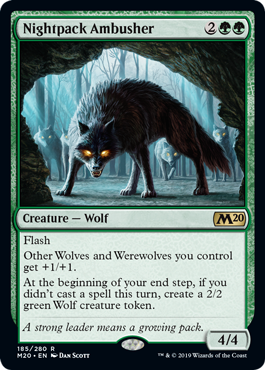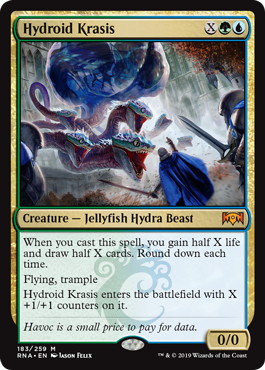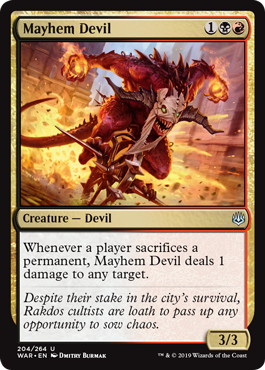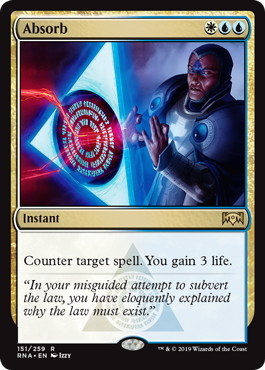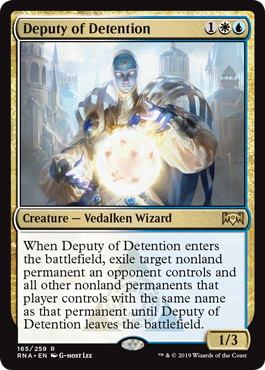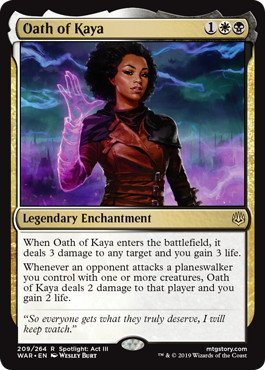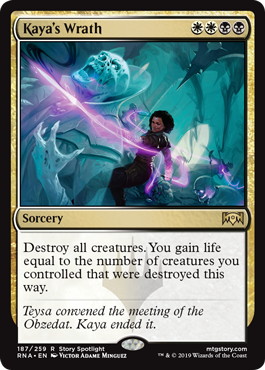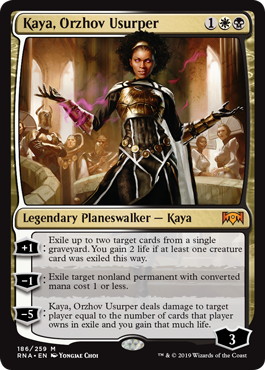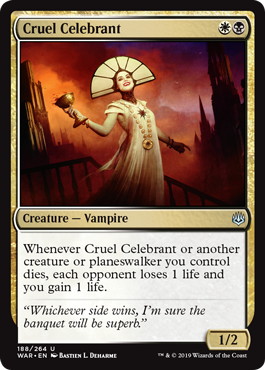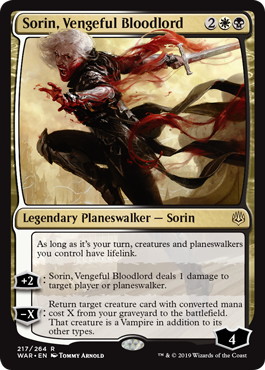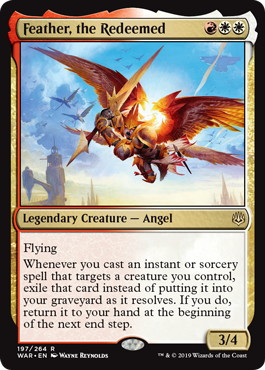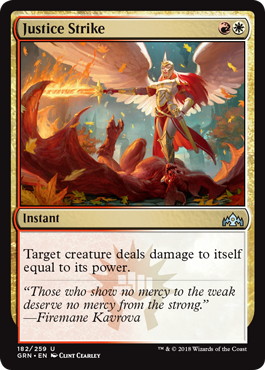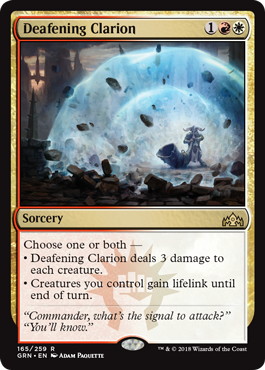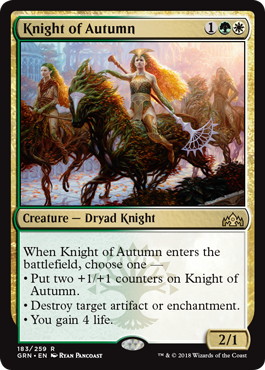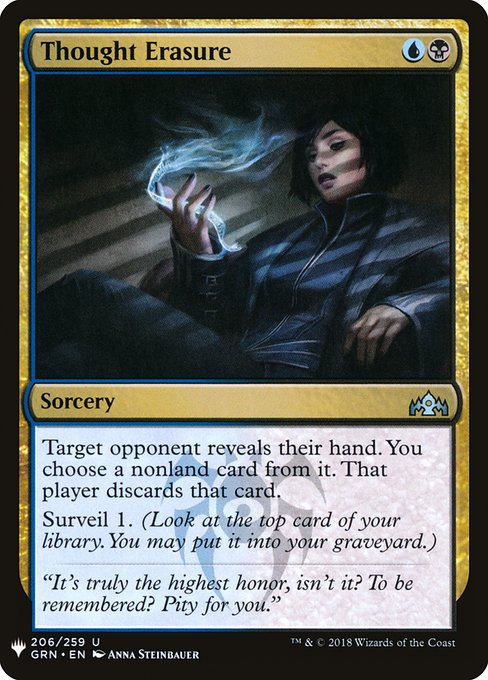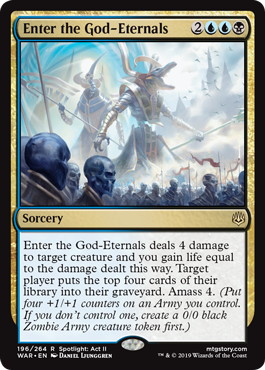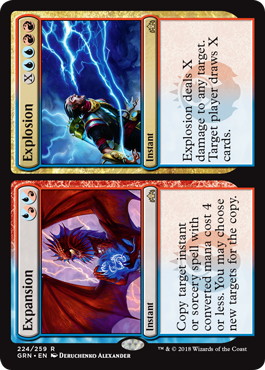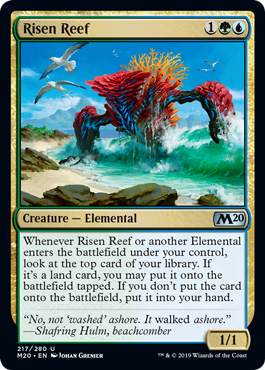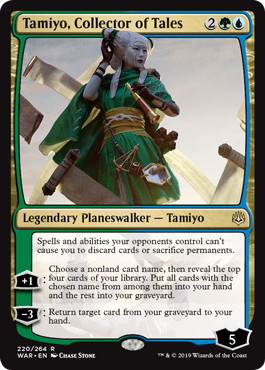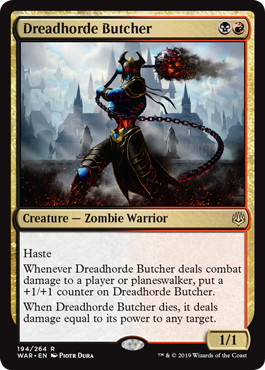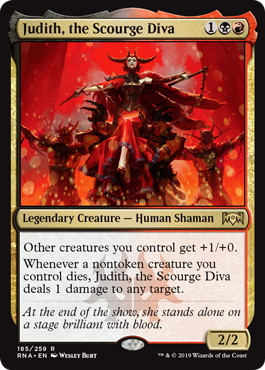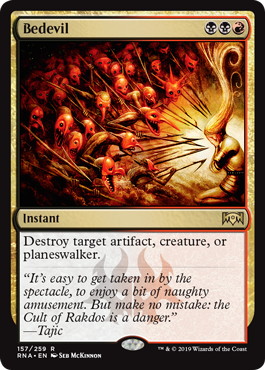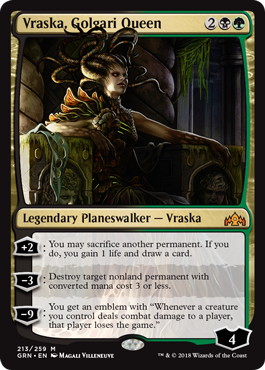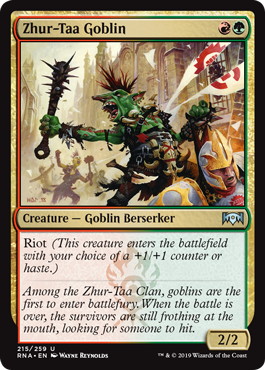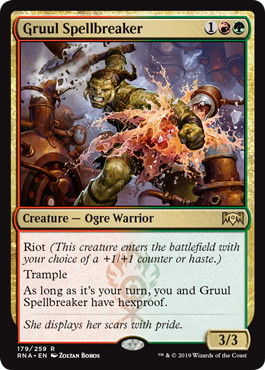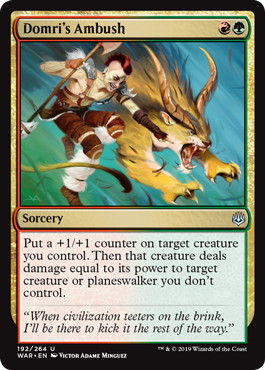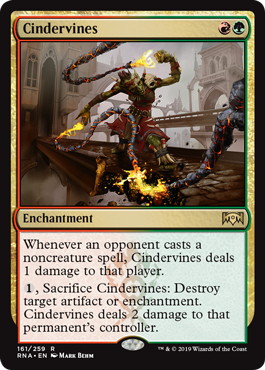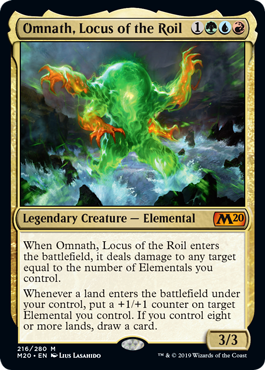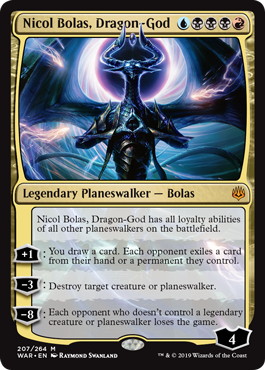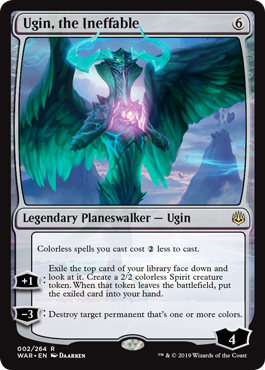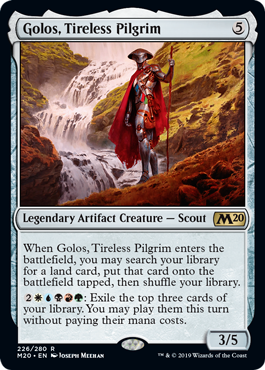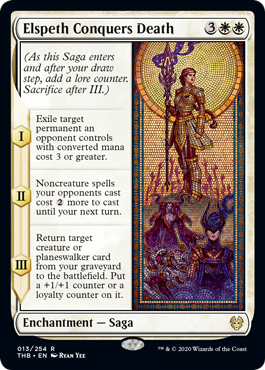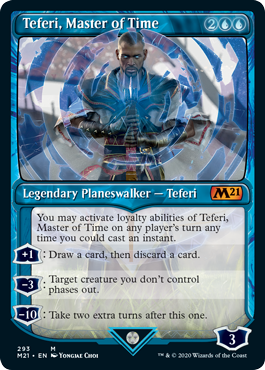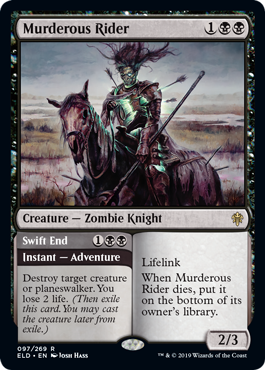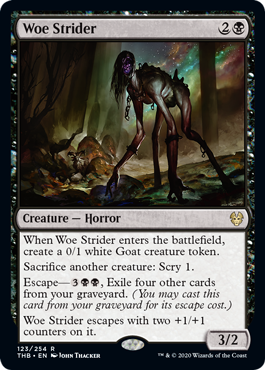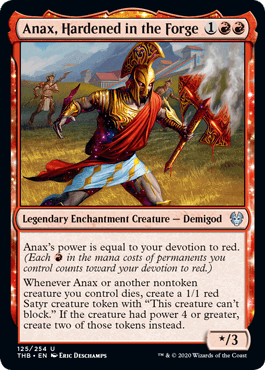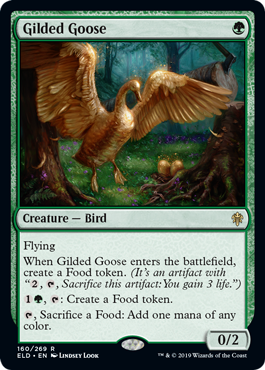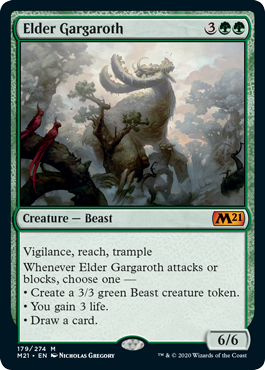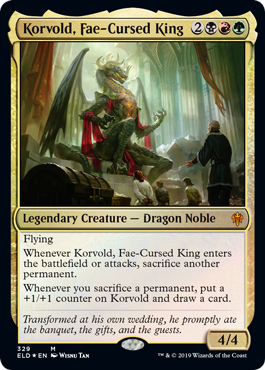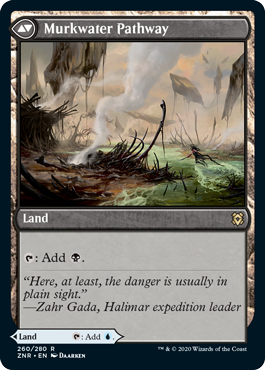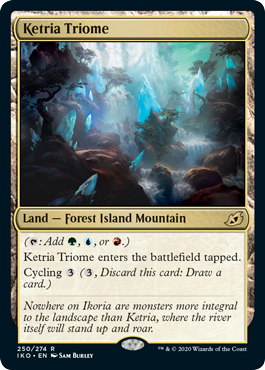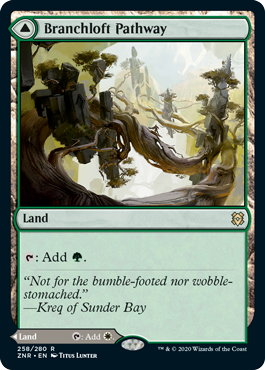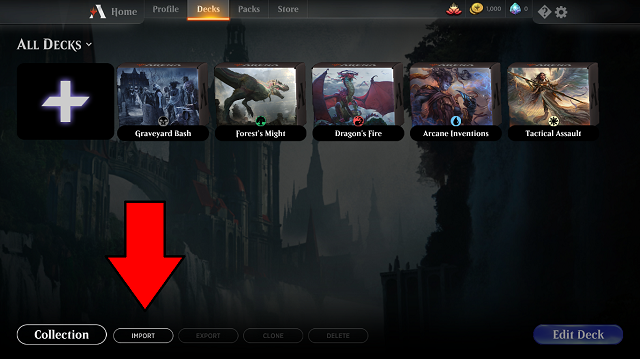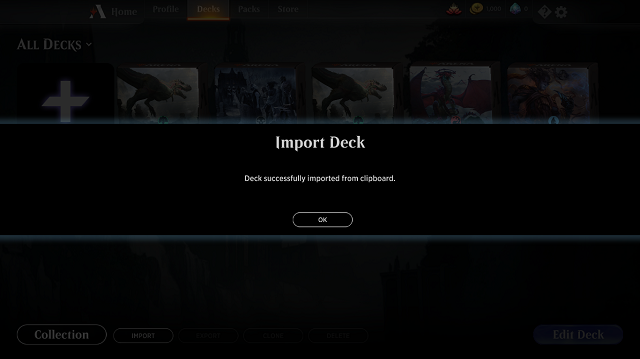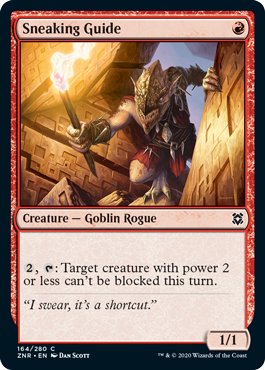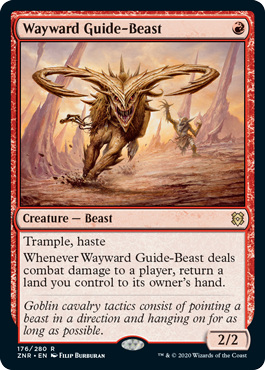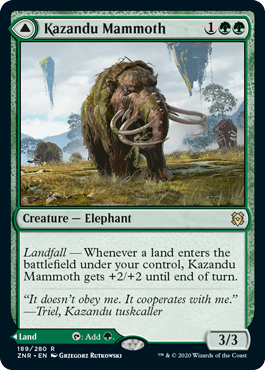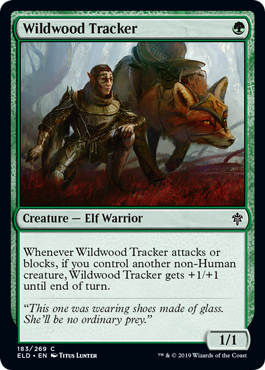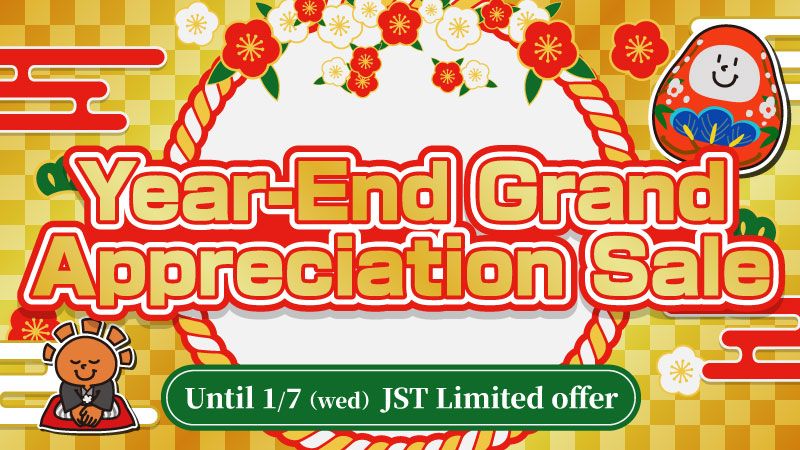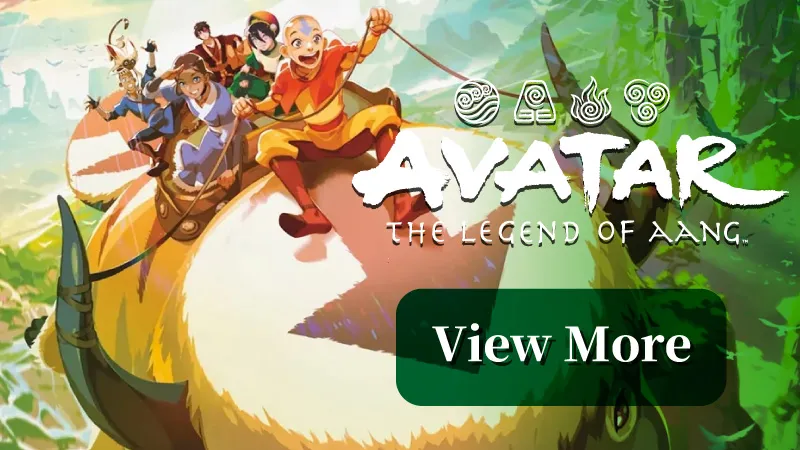Introduction
Hello everyone,
It’s rotation time! That time when we hit the reset button and start fresh from the theory before we get to play some games for the practice. Today I am going to share my process to evaluate how I think the new Standard format is going to look like.
In the past year or two, the Standard sets have been extremely powerful, to the point that more cards have been banned in that period than ever before in recent history. Zendikar Rising seems to also have pressed the button to reset that power creep. We got very interesting new cards, but the overall power level of the set is lower.
Cards Leaving the Format
Let’s start having a look at what important cards are rotating out.
White
White has been the weakest color for some time now and it’s losing 《Venerated Loxodon》, a card that defined the few weenie strategies we’ve seen the past couple of years. With it, 《Hunted Witness》, 《Healer’s Hawk》, 《Raise the Alarm》 and 《Tithe Taker》 are also going.
Blue
Blue is losing 《Aether Gust》 and 《Narset, Parter of Veils》 as key cards. Also some cheap creatures and good counterspells like 《Pteramander》, 《Spectral Sailor》, 《Cerulean Drake》, 《Brineborn Cutthroat》, 《Disdainful Stroke》, 《Sinister Sabotage》 and 《Quench》.
Black
Black is losing quite the bunch. 《Gutterbones》, 《Knight of the Ebon Legion》, 《Priest of Forgotten Gods》, 《Midnight Reaper》, 《Rotting Regisaur》, 《Bolas’s Citadel》, 《Spawn of Mayhem》, 《Disfigure》, 《Noxious Grasp》, 《Cry of the Carnarium》, 《Drill Bit》 and others…
Red
The most important Red card leaving is probably 《Runaway Steam-Kin》 and with it some of the good aggressive cards like 《Legion Warboss》, 《Experimental Frenzy》, 《Tin Street Dodger》, 《Scorch Spitter》, 《Skewer the Critics》, 《Light Up the Stage》. 《Sarkhan the Masterless》 and 《Flame Sweep》 are also gone.
Green
Green is losing different archetypes defining cards. 《Pelt Collector》, 《Nissa, Who Shakes the World》, 《Nightpack Ambusher》, 《Arboreal Grazer》, 《Shifting Ceratops》, 《End-Raze Forerunners》, 《Voracious Hydra》, 《Cavalier of Thorns》, 《Vivien, Arkbow Ranger》, 《Paradise Druid》, 《Barkhide Troll》, 《Leafkin Druid》, 《Kraul Harpooner》.
Gold
The most important Gold cards leaving have to be 《Hydroid Krasis》 and 《Mayhem Devil》. However, they are not the only multi-color cards lotating out.
Azorius
Orzhov
Boros
Selesnya
Dimir
Izzet
Simic
Rakdos
Golgari
Gruul
Three-Color
Colorless
Finally for Colorless we are losing 《Grafdigger’s Cage》, 《Ugin, the Ineffable》, 《Karn, the Great Creator》, 《Golos, Tireless Pilgrim》, 《Blast Zone》 and last but certainly not least: the 10 shocklands (《Blood Crypt》 and the rest).
I wasn’t expecting this list to be so big when I started and I am sure I’ve missed a few other important cards as well. This is good proof of how much the format is changing with rotation.
Cards remaining in the Format
From the sets remaining in Standard, we have cards that have seen plenty of play already.
White
Blue
Black
Red
Green
Gold / Colorless
And there are many other good cards that didn’t have the opportunity to shine yet.
Most of the decks we’ve seen in the past few months in Standard are gone now. Many because of the necessary banning of cards and the rest because of the rotation of key cards. The two big exceptions are probably Boros Cycling (or similar versions) and Temur Adventures.
Which Color Combination Is More Consistent?
Before digging in the new powerful spells to build around or add to existing archetypes, I’d like to have a look at how the mana bases look like, to have a better idea of how consistent a specific color combination would be.
From the previous sets, we have all 10 Temples as good dual lands and the 5 Triomes. From Zendikar Rising we have the Double Faced Lands (DFL), but not all 10 of them, just 6 (Selesnya, Orzhov, Dimir, Gruul, Boros and Izzet). What does this mean?
The best three color mana bases are going to be for Temur, Jeskai, Abzan and Mardu. These are going to have access to their Triome, two sets of DFL and three sets of Temples. This is up to 24 “good lands”, not including 《Fabled Passage》 or any basics.
The last Triome, Sultai, only has access to one DFL. Still a decent mana base in this color combination.
Naya doesn’t have access to a Triome, but can use three of the DFL in its mana base, this is going to be particularly useful for aggressive strategies looking to play as many untapped lands as possible.
Grixis and Esper are also looking okay with two sets of DFL. Fill these with some Temples and you also get a decent mana base, the more taplands you play, the more consistent your mana, but of course the more loss of tempo.
Finally Jund and Bant are the ones with worse possible mana. No Triome and only one set of DFL available to each of them. There are other ways of fixing your mana of course, but even before having a look at spells, I can already see these two combinations of colors being at a disadvantage.
For the two color combination, the six with the set of new lands are naturally going to be more consistent. In the remaining four color pairs, aggressive decks specifically are going to suffer a lot trying to cast their spells on time. Sad news for the Rakdos fans.
What about the Spell-Lands double faced cards? – you may ask. These cards look amazing and I am very excited to try them out. I just don’t think they would fix the problem with bad mana bases (even though they will improve it).
If you count these cards as lands when you build your deck, you are probably adding a lot more taplands than you should (Paying 3 life for the mythic ones is not trivial) and still not fixing the fact that these aren’t dual lands. If you count these as spells then you are probably dropping the power level because most of these aren’t very good, or are very circumstantial (it’s the payback for the flexibility of being a land when you need it).
Decklists With New Set Mechanics
Moving forward, having a look at the spells of the new set, there is no 《Oko, Thief of Crowns》, there is no 《Once Upon a Time》, there is no 《Teferi, Time Raveler》 and there is no 《Uro, Titan of Nature’s Wrath》. The set seems to be more balanced and there is no one obvious outstanding card to build around with. Instead we have interesting mechanics like Party and Landfall.
Mono-Red Aggro
Finding the best build for Party decks is going to take some time. There are risks and rewards for adding more or less colors and adding more or less diversity of creature types. Some payoff are good enough for having one or two party creatures and others really want to push you to try and assemble a full party.
Personally, I prefer trying to build a solid deck with some added bonuses from Party creatures instead of forcing the mechanic by playing suboptimal creatures because of their typing. Here’s an example:
- Fabrizio Anteri
- – Mono-Red Aggro
- (Standard)
2 《Castle Embereth》
-Land (18)- 4 《Fervent Champion》
4 《Fireblade Charger》
1 《Sneaking Guide》
1 《Wayward Guide-Beast》
4 《Grotag Bug-Catcher》
4 《Kargan Intimidator》
4 《Robber of the Rich》
4 《Ardent Electromancer》
4 《Bonecrusher Giant》
-Creature (30)-
The only creature I am not really happy to play here is the 1x 《Sneaking Guide》. Very underwhelming on its own, but I want some extra 1-drops and I don’t want to play more copies of 《Wayward Guide-Beast》, which by the way you can always play on turn 1 and pass. It blocks if you need it to, or you can just keep the curve going and then attack the turn you need to cast 《Embercleave》. It can also bounce 《Shatterskull Smashing》 for some sweet value.
《Relic Axe》 is interesting, it’s not only boosting the Warriors for a decent number, but 《Fervent Champion》 can Equip for free and 《Fireblade Charger》 gains haste and deals more damage when it dies, becoming a decent threat later in the game.
For the rest this is a solid base for 《Embercleave》, which remains one of the most powerful cards in Standard. 《Ardent Electromancer》 is one of the best cards in Zendikar Rising, doing a decent impression of 《Burning-Tree Emissary》. It doesn’t only have the really high ceiling of being able to add up to 16 damage to the board on Turn 3 (if you kept seven cards on the draw, by casting all four 《Ardent Electromancer》s for Three Red mana each into 《Bonecrusher Giant》) but it’s still quite good to play this followed by 《Stomp》 or a two-drop.
Gruul Landfall
The next idea I want to discuss is Gruul Landfall and again I don’t think it’s necessary to push the mechanic to the top.
- Fabrizio Anteri
- – Gruul Landfall
- (Standard)
4 《Forest》
4 《Fabled Passage》
4 《Cragcrown Pathway》
2 《Temple of Abandon》
2 《Castle Embereth》
-Land (20)- 4 《Akoum Hellhound》
4 《Wildwood Tracker》
2 《Wayward Guide-Beast》
4 《Brushfire Elemental》
4 《Gallia of the Endless Dance》
4 《Lotus Cobra》
4 《Kazandu Mammoth》
3 《Radha, Heart of Keld》
4 《Questing Beast》
-Creature (33)-
Gruul Aggro always struggled with its mana since 《Once Upon a Time》 left the format. You want double Green, double Red, you want it untapped most of the time, but you don’t want to draw too many lands either. That’s why the double faced cards and the Landfall creatures have a very good home here.
Up to 28 cards could be played as lands, you also have 《Radha, Heart of Keld》 to play some from the top of your deck and 《Gallia of the Endless Dance》 to draw some extra cards (both lands and spells will be welcomed).
《Pelt Collector》 is going to be missed in these archetypes, but 《Wildwood Tracker》 is doing a decent impression in this build of 33 non-Human creatures. 《Questing Beast》 and 《Embercleave》 are a very scary top end.
It’s possible the deck also needs more interaction (《Shock》 and 《Bonecrusher Giant》 should be good), but for the first few days I’d focus on a more proactive plan.
Conclusion
There are other archetypes, mechanics and powerful cards with potential as well. Mutate, Sacrifice, Kicker, Escape, Equipments, Rogues, Clerics, 《Omnath, Locus of Creation》, 《Nissa of Shadowed Boughs》, 《Nullpriest of Oblivion》, 《Felidar Retreat》, 《Agadeem’s Awakening》, 《Skyclave Apparition》 and many more.
It’s going to be very interesting to see how the next few weeks of Standard develop until Uro takes over once again.
Thanks for reading,
Fabrizio (Twitter)


